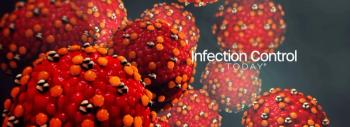
Faster and Better Healing of Infected Wounds Using Negative Pressure Technique
Shorter wound healing time, fewer dressing changes and the opportunity for earlier discharge from the hospital. These are some of the benefits of negative pressure wound therapy to treat wound infections in connection with vascular surgery at the groin. The method, which has become increasingly common, is also cost-effective. This is shown in a thesis from Lund University in Sweden in which the method has undergone its first major scientific evaluation in deep perivascular groin infections after vascular surgery.
This image shows how the negative pressure treatment of a wound works. Illustration courtesy of Stine Høxbroe, Copenhagen, Denmark
Shorter wound healing time, fewer dressing changes and the opportunity for earlier discharge from the hospital. These are some of the benefits of negative pressure wound therapy to treat wound infections in connection with vascular surgery at the groin. The method, which has become increasingly common, is also cost-effective. This is shown in a thesis from Lund University in Sweden in which the method has undergone its first major scientific evaluation in deep perivascular groin infections after vascular surgery.
In connection with surgery, the patient is at risk of an infection in the surgical wound, and this is the second most common form of healthcare -associated infections in Sweden. However, despite the fact that wound therapy is a fundamental and crucial part of healthcare, there are relatively few scientific studies on the subject, and the level of expertise among healthcare practitioners is insufficient. This is argued by Christina Monsen, doctoral student at Lund University and registered nurse specializing in wound therapy at the Skåne University Hospital.
"Personal experience is not enough to determine whether a certain wound therapy method actually works. But this is a difficult field of research, randomized trials in particular, especially when there is already strong beliefs and attitudes favouring one wound therapy among personal staff," says Monsen
Monsen's current thesis compares the use of negative pressure wound therapy of infected wounds at the groin after vascular surgery with a previously established method: alginate dressings. The study is the first more extensive scientific evaluation of negative pressure techniques to treat infected wounds, and it has taken several years to execute.
"On average, the wound healing time was almost cut in half for patients who received negative pressure wound therapy - from 104 days to 57. The in-hospital care time was also reduced by a week, to an average of 13 days compared to 20," says Monsen.
The negative pressure technique entails placing a foam sponge inside the cleaned wound, which is then covered by a tightly sealed plastic film. Through a small opening, a portable vacuum pump is attached, sucking up all the excess exudates while allowing the wound to gradually contract during the time of healing.
The groin is a commonly used point of entry during vascular surgery as it allows surgeons to reach several vital bodily systems and organs. At the same time, it involves an increased risk of infection because of its proximity to the intestinal bacterial flora. Refractory infections at the groin can in serious cases lead to amputation of the patient's leg or even death.
Negative pressure wound therapy was introduced in Swedish hospital clinics just before the turn of the millennium, and has gradually grown. However, despite increasing use it has remained poorly scientifically evaluated.
The thesis also finds that negative pressure wound therapy requires fewer dressings and is cost-effective and timesaving for staff. The comparative studies, based on patient data from Skåne University Hospital (SUS) in Malmö, were supplemented with interview studies. From these studies it emerged that the patients wanted to receive more knowledge and be more prepared on how to care for themselves after being discharged from the hospital, something which the clinic at SUS will now review.
"I hope that the results will promote the use of negative pressure wound therapy in clinics in Sweden and abroad where it has not been used so far, and that the hospital care times can be decreased on the basis of these results," says Monsen.
The studies were funded by Vårdakademin (Academy of Caring Sciences) at Skåne University Hospital and through a grant from Regional Research Support, among others.
Source: Lund University
Newsletter
Stay prepared and protected with Infection Control Today's newsletter, delivering essential updates, best practices, and expert insights for infection preventionists.






